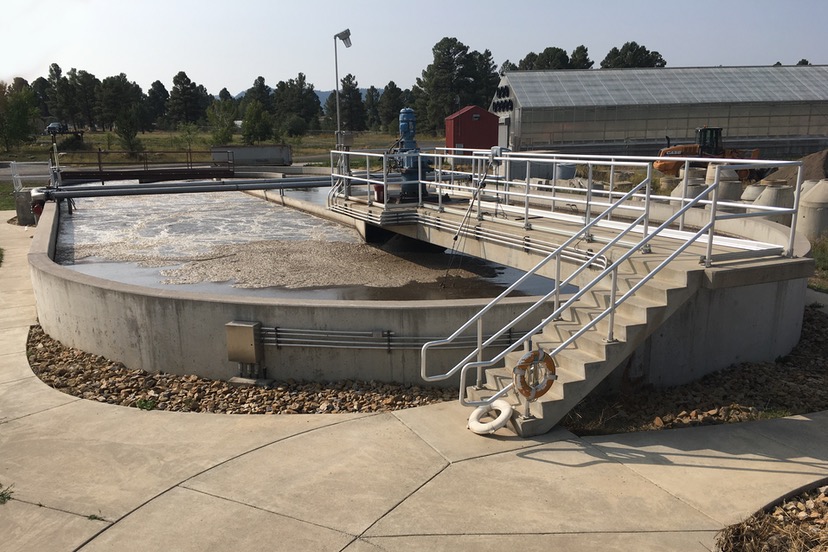(Disclosure: I currently serve as a volunteer member of the Pagosa Area Water and Sanitation District — PAWSD — Board of Directors, but this editorial reflects only my own opinions and not necessarily the opinions of the Board as a whole, or of any other Board members.)
When I ran for a seat on the PAWSD Board of Directors, I expected I would have to make some difficult decisions, eventually.
That situation has definitely arrived.
The first difficult decision came when the projected cost of the new Snowball Water Treatment Plant came in at $40 million instead of $20 million. The plant will greatly increase the amount of treated drinking water PAWSD can produce, now and far into the future… and the interest rate and terms on the loan were not terrible.
The community will be paying for this project for decades. But PAWSD had been planning to replace the Snaowball plant for at least the past ten years, so the District has been preparing financially, and the very expensive upgrade will not cause a big increase in customer fees.
A tougher decision will be presented to the Board tonight, Thursday, February 15, at the Lyn Avenue office at 5pm related to wastewater fees.
Several years ago, the Colorado Department of Public Health and Environment (CDPHE) determined that the sewer outflow at the PAWSD Vista Wastewater Treatment Plant — an outflow that runs into Martinez Creek, and then into Stollsteimer Creek, and then into the Piedra River — contained an excessive amount of certain chemicals, mainly nitrogen and phosphorus compounds.
CDPHE ordered PAWSD — under Colorado Regulation 85 — to upgrade our treatment facility to remove those compounds. The Board and staff argued over the seemingly unfair treatment, because no other sanitation districts on the Western Slope were being required to make similar upgrades.
CDPHE was not moved by our arguments. So PAWSD has hired an engineering firm to design the necessary upgrades. Which have to be paid for.
Additional (expensive) wastewater requirements — known as Regulation 31 — may be coming down the pike, from the federal Environmental Protection Agency (EPA) within the next few years.
Who should pay for these expensive upgrades?
At tonight’s meeting, the PAWSD Board will be holding a public hearing, to discuss the recommended rate increases calculated to account for the rising cost of labor, chemicals, and materials at PAWSD, as well as for maintenance and capital improvements. The numbers were developed by the global engineering firm Stantec based on estimates from PAWSD staff. The rates have been discussed over a period of several months, but tonight is an official ‘public hearing’ to be followed (possibly) by Board approval of the new fees.
Although PAWSD is a governmental taxing entity, it operates its two main services — provision of drinking water, and wastewater treatment — as if they were ‘businesses’. That is to say, the drinking water operations and the wastewater operations are funded mainly by ‘customer fees’ rather than by taxes. This form of bookkeeping is called an ‘enterprise fund’ and has certain financial advantages for a government utility.
There are basically five income streams paying for the PAWSD wastewater ‘enterprise’:
1. Monthly fees paid by existing residential and business customers.
2. Dumping fees paid by waste haulers serving local septic systems and ‘port-a-johns’.
3. Availability fees paid by still-undeveloped vacant properties within 100 fee of existing PAWSD infrastructure.
4. Capital Investment Fees (CIF) paid by new homes and businesses when they hook up to the PAWSD system.
5. Inclusion fees paid by properties newly joining the PAWSD district.
On the wastewater side, PAWSD has been barely meeting its expenses with its various fees. And the future outlook is apparently even worse. The following graph from Stantec suggests that, without a fee increase, the PAWSD wastewater fund will be almost $20 million in the red by 2032.

The black line indicates a “Reserve Requirement”, as calculated by Stantec.
To address this pending shortfall in the wastewater fund, the PAWSD Board will be considering dramatic increases to the certain fees.
The Stantec graph showing proposed increases in monthly customer fees shows the wastewater bill doubling over the next two years.

The current monthly fee for PAWSD waste customers is currently $32.80. The suggested fee in 2025 is almost double that amount, at $64.29, which would be higher than the monthly fee charged by the Town sanitation district ($53.50).
The projection shows a monthly wastewater fee reaching $103.04 by 2031. More than triple the current fee.
An even more dramatic fee increase is proposed for new development.
The consensus of the Board during a November discussion of future fee increases was: everyone should be paying about the same percentage increase. Except for two groups. New development, and vacation rentals.
The proposal tentatively supported by the Board shows the wastewater CIF, paid by new development projects, increasing from $1,179 in 2023… to $16,509 in 2024.
Ouch. That’s a 1400% increase.
The Board also expressed support, in November, for a 40% wastewater surcharge charged to STRs (Short-Term Rentals) based on research by Stantec showing that STRs use about 40% more water than normal residential homes.
The PAWSD Board will consider the approval of these fee increases night at 5pm. The public is invited to testify.
I hope to share the concerns expressed by the public at the hearing, and the responses to those comments from the PAWSD Board of directors, in Part Two.

